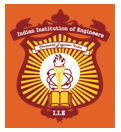THE ACADEMIC PROGRAMME OF THE INSTITUTION MAINLY CONSISTS OF SECTIONS ‘A & B’ EXAMINATIONS, POPULARLY KNOWN AS THE AMIIE EXAMINATION.
DIPIIE in ELECTRONICS & COMM. ENG.
Information For:
- Home
- Examination
- R&D
- Application Status
- Apply Membership Online
- RTI Information & Reply
- Awards
- Become Student's Chapter
- Online Verification
- Placement Service
- Alumni Association
- Approval & Recognition
- AMIIE(B.Tech./B.E.)
- DIPIIE-DMIIE-TMIIE(Diploma)
- List of Student's Chapter
- Our Vision
- Circular/Notice/Tender
- Hall Ticket
- Examination Result
- Vacancy & Career
- Global Linkage
- Downloads
Key Highlights of the AMIIE
- Project based learning through industry collaborations.
- Focus on skill building & practical implementations.
- Interactive sessions with industry experts through Student's Chapter.
About
This branch of engineering develops everyday devices such as transistors, integrated circuits and printed circuit boards (PCBs) which can be used in computers, MP3 players, cell phones, television to name a few.
rs of the house to industries. The tasks of the Electronics and Communication engineers are to direct, control and test produce processes a well as to ensure safety, installation and functioning of the various mechanisms.
The discipline integrates knowledge based on digital electronics and logic design, fundamentals of communication engineering, electronic circuits, signal and systems, power electronics, applied electromagnetic theory, integrated circuits, VLSI, control systems and computer architecture.
The core courses studied in this branch include the following:
Electromagnetics
Electronics
Electrical circuits and machines
Signals and systems
Digital Signal Processing
Microprocessors and Embedded systems
Communication systems
Optical systems
VLSI
The sub fields covered in the Electronics and Communication Engineering include analog electronics, digital electronics, consumer electronics, embedded systems and power electronics.
Career
After completing a B. Tech/BE students can opt for M. Tech/MS in various subjects such as Fiber Optics and Light waves, Microelectronics & V L S I Design, RF and Microwaves, Telecommunication Systems, Visual Information and Embedded Systems.
This branch offers plethora of job opportunities for the engineers. They are mostly employed by electronic and communication industry. The other industries which offer placement to the students include IT, consumer electronics, power transmission companies, computer applications, aviation, telecommunication, electronic media and manufacturing companies.
According to the NIT Silchar Placement 2015 report, Electronics & Communication Engineering has seen 76 percent of the batch strength getting placed. Highest package of Rs. 9 LPA was offered by BhramHos Aerospace. Besides, electronic giants like Philips, Nokia, Reliance Jio were among the major recruiters this year, offering an average salary of Rs. 5 LPA.
Job Prospects
Electronics Engineer
Electronics Design Engineer
Telecommunications Engineering Specialist
Electronics Test Engineer
Electromechanical Engineering Technologist
Remuneration
The Electronics sector in India is expected to be an USD 29 Billion consumer market by 2020. The demand projected by 2015 is USD 94.2 Billion. The industry growth rate between 2011 and 2015 is 9.88%.
As per the above data, you must have realized the huge demand for skilled manpower in this sector. This is what makes the branch one of the most sought after for the engineering aspirants who have cleared the initial rounds of the admission process, such as cracking the engineering entrance exams to be followed by counselling rounds.
Work Project
Candidates are required to submit a Referee / Project Report to complete the requirement of the Technician Membership Examination(TMIIE-DIPIIE-DMIIE).
A candidate of Technician Membership Examination(TMIIE-DIPIIE-DMIIE) can take up submission of his report only after he has obtained a pass in Part-I of TMIIE-DIPIIE-DMIIE Examination and only after he/she has appeared and obtained 40% marks in at least 5 subjects of Part-I of TMIIE-DIPIIE-DMIIE Examination.
Part-I
Part-II
- STRENGTH OF MATERIALS
- FLUID MECHANICS
- MATERIAL SCIENCE & ENGINEERING
- WORKSHOP TECHNOLOGY
- ENVIRONMENTAL ENGINEERING
- METROLOGY
- TECHNICAL ENGINEERING DRAWING
- ESTIMATING & COSTING
- DIGITAL ELECTONICS
- ELECTRICAL CONTROL SYSTEM
- ELECTRICAL DEVICE & CIRCUIT
- ELECTRICAL MACHINES
- ELECTRICAL TECHNOLOGY
- ELECTROMAGNETIC FIELD THEORY
- NON-CONVENTIONAL ENERGY SOURCES
- THEORY OF MECHANICAL ENGINEERING
- TRANSMISSION & DISTT. OF ELECT.
- UTILIZATION OF ELECTRICAL ENERGY
What Is AMIIE?
Full form of AMIIE is “Associate Member of the Indian Institution of Engineers”. AMIIE is a professional certification given by Indian Institution of Engineers (IIE).
